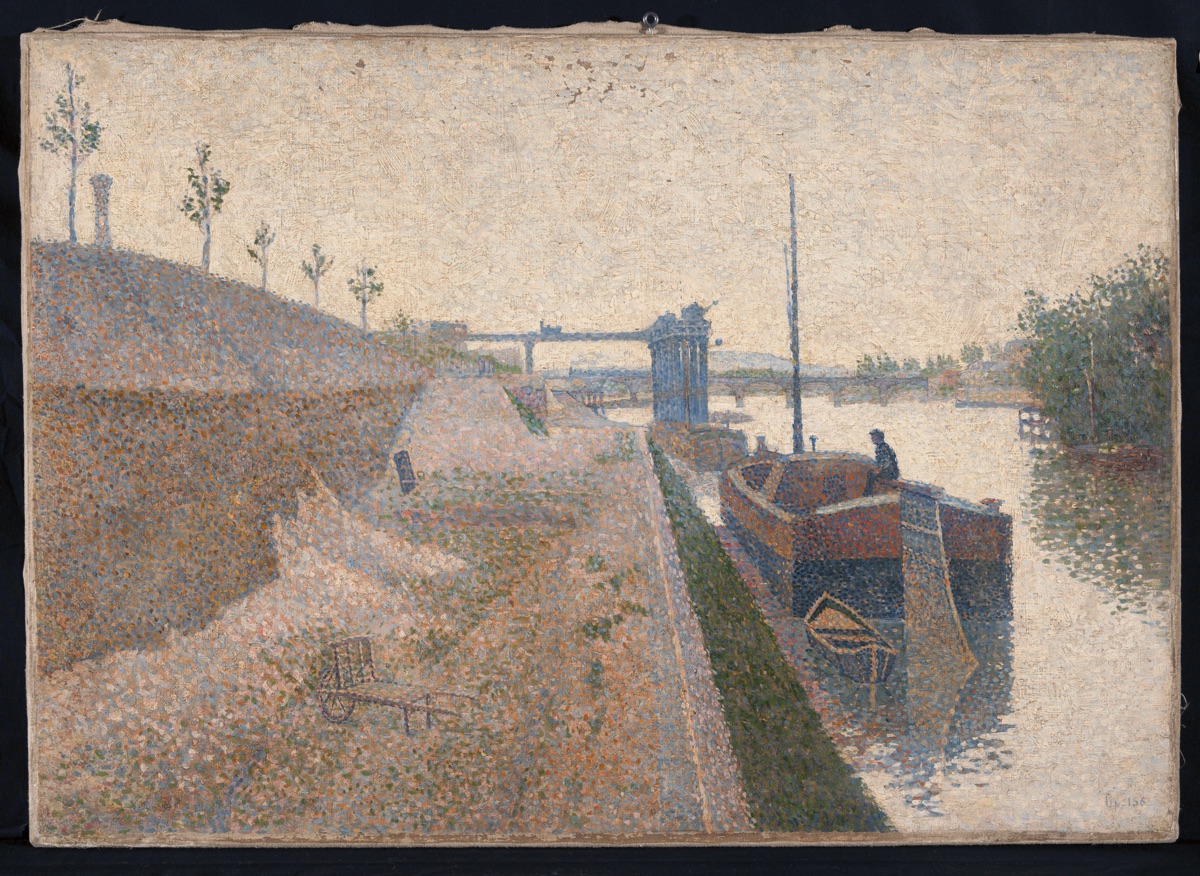French Painting Stolen by Nazis in 1940 Raid to Be Returned to Owner's Descendants

An artwork by Paul Signac — a painter who helped invent the pointillist style — was stolen from a French home during a Nazi raid in 1940. Signac's painting recently resurfaced in a private collection, and German cultural authorities said it will be returned to the descendants of its original owner.
The painting had been in the infamous Gurlitt trove, a collection of art that German authorities have been investigating for the past several years, because many pieces were suspected to have been stolen from Jewish families and other victims of Nazi persecution.
Proving that an artwork was stolen, however, has been tricky for the researchers at the German Lost Art Foundation who have been working on the Gurlitt case. The collection of about 1,500 artworks was discovered in 2012. So far, only seven Nazi-confiscated pieces, including the Signac painting, have been identified. Other artworks identified as Nazi loot include paintings by French artists Camille Pissarro, Henri Matisse and Thomas Couture. [Images: Missing Nazi Diary Resurfaces]
The original owner of the Signac painting was French Jewish real estate broker Gaston Prosper Lévy. In Paris, Lévy had been compiling a collection of French impressionist paintings and was a champion of Signac's. In 1927, he acquired Signac's 1887 painting "Quai de Clichy. Temps gris" (or "Clichy Dock. Grey Weather").
Before Lévy and his wife fled the Nazis and went to Tunisia, he sent most of his art collection to his residence Les Bouffards, south of Paris, in June 1940. Witness accounts indicate that a few months later, the collection was seized by German soldiers. What happened to the collection after this raid is still unknown. But researchers have figured out that somehow "Quai de Clichy" entered the French art market, and German art dealer Hildebrand Gurlitt acquired it sometime between 1943 and 1947.
Gurlitt had collaborated with the Nazis to sell "degenerate" art abroad and to acquire pieces for Nazi museums, such as Hitler's planned Führermuseum. Gurlitt was exonerated in his denazification trials, and he remained in the art world after World War II ended. His son Cornelius Gurlitt, who died in 2014, inherited the artworks, which came to the attention of authorities in 2012. By then, new standards had been developed for dealing with and restituting cultural property that been stolen by the Nazis.
"We are already in contact with a representative of the descendants, and I am confident that we will be able to restitute the painting very soon," Germany's commissioner for culture and media Monika Grütters said in a statement announcing the identification. "This case reminds us once again that we must never give up in our efforts to thoroughly investigate Nazi art theft, for which Germany bears responsibility. Each restituted work of art is another important step in the quest for historical justice."
Sign up for the Live Science daily newsletter now
Get the world’s most fascinating discoveries delivered straight to your inbox.
- 30 of the World's Most Valuable Treasures That Are Still Missing
- 7 Biblical Artifacts That Will Probably Never Be Found
- 7 Bizarre Ancient Cultures That History Forgot
Originally published on Live Science.











